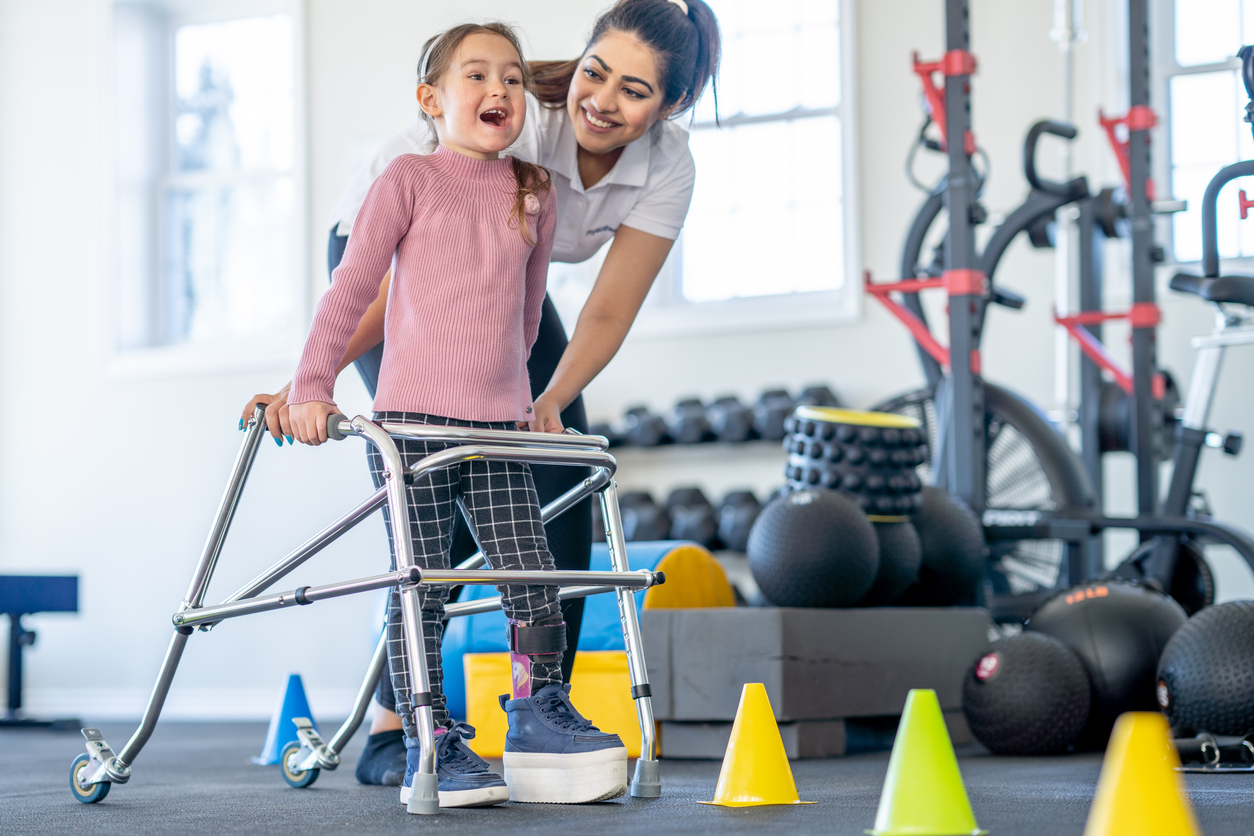
For many parents, noticing that one of their child’s legs appears shorter than the other can be both confusing and concerning. While a small difference in leg length is common and often harmless, a more significant difference—known as leg length discrepancy (LLD)—can affect the way a child walks, runs, and grows. The good news is that pediatric orthopaedic specialists have a range of safe and effective treatment options to help restore balance and function. From careful observation and growth-modulating procedures to advanced surgical limb lengthening, modern treatments are designed to support healthy development and keep kids active, comfortable, and confident.
Pediatric leg length discrepancy is a condition where one of a child’s legs is noticeably shorter than the other, affecting overall skeletal balance and function. It can impact a child’s mobility, posture, and long-term musculoskeletal health. Understanding the nature and causes of leg length discrepancy is the first step toward effective treatment—which may include non-surgical options, growth-modulating procedures, or, in some cases, the life-changing potential of surgical limb lengthening.
Types of Leg Length Discrepancy
Symptoms of Leg Length Discrepancy (LLD)
Causes of Pediatric Leg Length Discrepancy (LLD)
Pediatric Leg Length Discrepancy is not a single disease but rather an outcome of various underlying issues that affect the growth plates or the bone structure itself.
Issues can include:
Diagnosis of Leg Length Discrepancy (LLD)
Accurately diagnosing Leg Length Discrepancy (LLD) is the first step toward planning effective treatment. Diagnosis is performed by a specialized pediatric orthopaedic surgeon utilizing both clinical expertise and advanced imaging to determine the precise nature and extent of the discrepancy.
Growth Modulation and Epiphysiodesis
Not every child with a leg length difference requires a full limb-lengthening procedure. When a child still has growing years remaining, your pediatric orthopaedic surgeon may recommend growth modulation or epiphysiodesis—minimally invasive procedures that guide or balance growth instead of replacing it.
Epiphysiodesis
Epiphysiodesis involves slowing or temporarily stopping growth in the longer leg by targeting the growth plate (epiphysis). As the shorter leg continues growing, the difference gradually decreases.
Growth Modulation
Growth modulation techniques use small plates, screws, or implants to gently guide bone growth and alignment. They can also correct angular deformities such as knock knees or bow legs. Once the correction is achieved, the implants are removed.
When Recommended
Growth modulation and epiphysiodesis are most effective for children who are still growing and whose leg length difference is projected to be less than 5 cm (about 2 inches) at skeletal maturity. They may serve as:
Advantages
Consolidation Phase (Healing) Phase
Surgical limb lengthening is a controlled, gradual process designed to correct a deformity, straighten a limb, or replace missing bone. This advanced procedure uses innovative internal lengthening devices that allow the bone to grow safely and precisely over time.
The process begins with placement of a specialized expandable rod inside the bone. Inside the rod is a magnetic gear system, secured with screws to keep the device stable. The incisions are then closed with stitches.
Distraction (Lengthening) Phase
After surgery and initial healing, lengthening begins. Using a handheld magnetic remote placed on the skin, the internal gear system is activated to gently pull the two bone segments apart by less than a millimeter per day. This gradual movement stimulates new bone growth (called distraction osteogenesis) in the gap.
Consolidation (Healing) Phase
Bone Healing
Physical therapy (PT) is a vital part of recovery. It helps maintain joint motion, strength, and flexibility throughout the process. Most children can gradually return to full activity—including sports—about 6 to 12 months after the initial procedure, once cleared by their surgeon.
Leg length discrepancy can range from a mild difference to a significant imbalance that affects walking, posture, and confidence. The good news is that modern pediatric orthopaedic care offers many effective solutions—from growth modulation and epiphysiodesis to advanced surgical limb lengthening—tailored to each child’s age, growth, and goals. With expert care, most children go on to lead fully active, healthy lives.
It is important to take your child to pediatric specialists who are experts in treating only kids. At Children’s Orthopaedic and Scoliosis Surgery Associates, LLP our board certified, fellowship trained, specialists provide the best child-friendly care using the latest cutting-edge technology that results in the safest and most accurate outcomes. Please call our office at (727) 898-2663 to schedule an appointment.
Medically reviewed by Daniel C. Bland, MD Board Certified Orthopaedic Surgeon.
Children’s Orthopaedic and Scoliosis Surgery Associates LLP provides information and articles as a service to our readers. No content on this site, regardless of date, should ever be used as a substitute for direct medical advice from your doctor or other qualified clinician. This blog provides general information and discussions about health and related subjects. The information and other content provided in this blog, or in any linked materials, are not intended and should not be construed as medical advice, nor is the information a substitute for professional medical expertise or treatment, If you have a medical concern, you should consult with your health care provider or seek other professional medical treatment. If you think you may have a medical emergency, call your doctor or emergency services immediately. The opinions and views expressed on this blog and website have no relation to those of any academic, hospital, health practice or other institution.